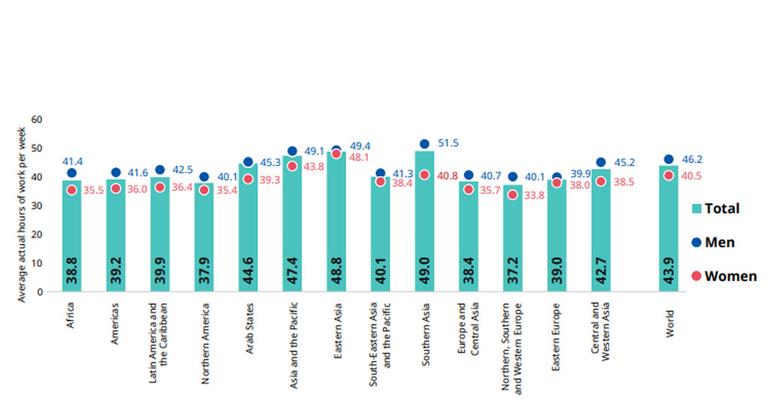The report also looks at crisis response actions which governments and companies took during the pandemic to help keep organizations functioning and preserve jobs, which found that more workers on reduced hours helped to prevent work losses. According to Working Time, countries should still support pandemic-era initiatives for example inclusive short-time work strategies, which not only saved jobs but also boosted purchasing energy and helped cushion the consequence of economic crises.
Recording hours
“This report shows that if we use some of the lessons of the COVID-19 crisis and look very carefully in the way working hours are usually structured, as well as their general length, we can create a win win, improving both business efficiency and work-life balance”, this individual added.

However , the document cautioned that the benefits of some flexible arrangements, such as investing more time with the family, can also be accompanied by greater gender unbalances and health risks.
© UNICEF/Karin Schermbrucker Issues around working hours and situations are “at the heart on most labour market reforms and evolutions taking place in the world today”, Branch Chief Philippe Marcadent said in the foreword in order to ILO ’s Operating Time and Work-Life Stability Around the World .
Varying arrangements
The study also highlights long-term changes. “The large-scale implementation of telework nearly everywhere in the world that it was feasible to do so, changed…the nature associated with employment, most likely for the foreseeable future” it asserts. The particular report analyses different lifestyles and their effects upon work-life balance, including shifts, arrangements for being on contact, compressed hours, and hours-averaging schemes. Covering the periods before and during COVID-19 , the report reveals that more than a third of all workers are regularly working over 48 hours per week, while a fifth of the worldwide workforce is labouring less than 35 hours per week, on a part-time basis.

Pandemic responses
And lastly, the report encourages teleworking to help maintain employment and give workers more agency. The report features a number of conclusions, such as that longer working hours are usually associated with lower productivity, while shorter hours are associated with greater output. The study, which is the first to focus on work-life balance, examines the affects that working hours and time schedules have on the performance of businesses and their workers. “The so-called ‘Great Resignation’ phenomenon offers placed work-life balance at the forefront of social plus labour market issues in the post-pandemic world”, said direct author Jon Messenger. The particular COVID-19 crisis measures furthermore yielded powerful new evidence showing that by giving workers more flexibility in just how, where and when they work, can be positive both on their behalf and for business, with significant productivity gains. “There is a substantial amount of evidence that work–life stability policies provide significant advantages to enterprises, supporting the argument that such plans are a ‘win-win’ for both employers and employees”, stated the report.
Findings
“The number of hours worked well, the way in which they are organized, and the availability of rest periods may significantly affect not only the quality of work, but also life outside of the workplace”. It also upholds that laws and regulations which arranged an upper limit on hours worked and lawful rest periods, contribute to the long-term health and well-being of society.

Conversely, limiting flexibility brings substantial costs, including higher staff turnover.
Recommendations
Unsplash/Daria Mamont Innovative working-time plans, such as those introduced throughout the COVID-19 crisis, can bring great benefits, including greater efficiency and improved work-life balance, said Mr. Messenger. Sebabatso Nchephe (right), 18, chats distantly with her mentor, Pretty Jagivan (on screen) at the offices of Roche Pty Ltd in Sandton, South Africa. Working Time and Work-Life Balance Around the World, ILO